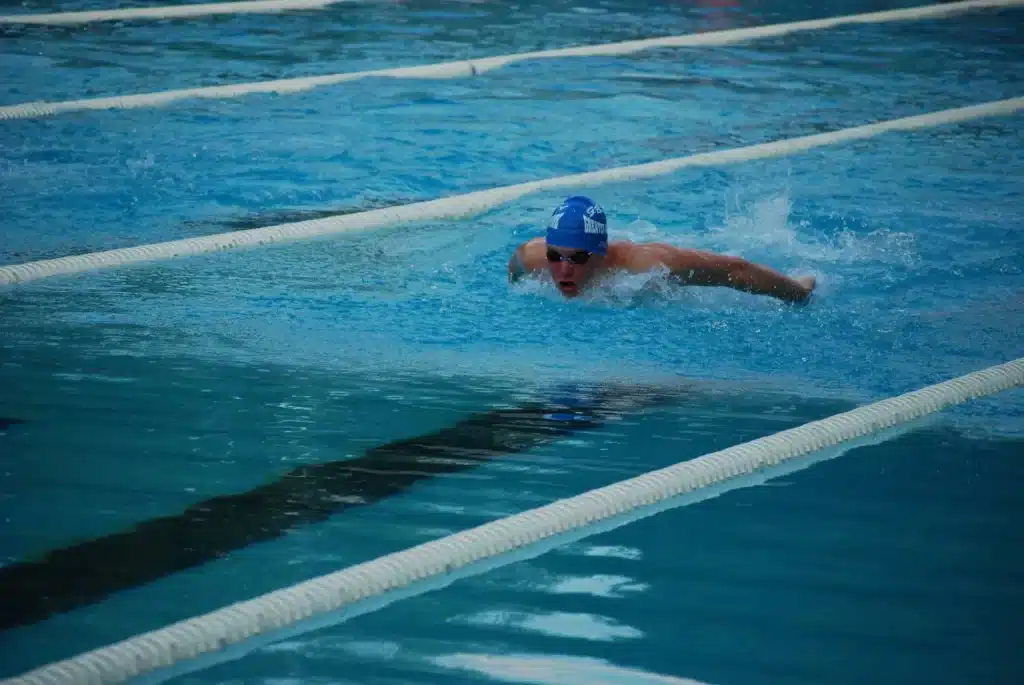At Lifestrength Physical Therapy, I am fortunate to work with a lot of swimmers. One of the most frequently asked questions is, “Should I keep training when I have a swimming injury?” For a lot of those swimmers, the (short) answer is “yes.” There are specific modifications we make (changing yardage, doing only certain strokes, doing certain drills, bilateral breathing, etc.) to allow their swimming injury to heal. If we tell a swimmer to not swim, it is likely they have been out of the water for a couple weeks already and swimming with modifications would do more harm than good. If I tell a swimmer to not swim, it is the goal to help get the swimmer back in the water as fast as possible, as long as it does no harm and is safe.
There are numerous reasons why keeping a swimmer in the water is important, even with a swimming injury. Here are the top four reasons why:
1. It’s How Swimmers Relieve Stress
It’s no secret that exercise is great for stress relief. For many athletes, their sport is the main way they deal with stress. If you keep a swimmer out of the pool, you are taking their main form of stress relief away from them. This can increase their stress levels and increasing stress outside of the pool can be counterproductive to the healing process. On top of not having a way to relieve stress, a swimmer’s stress level can further increase due to feeling like they are falling behind or won’t perform well at their next meet. While you do not want to rush a swimmer back to swimming when they are not ready, finding ways to modify their practice or swimming so they can swim will help keep them sane and feel like they are making progress toward their goals.
2. To Stay Connected their Friends
One of the best parts of playing a sport is the friendships you make. By keeping a swimmer out of the water, they are missing valuable time with their teammates. This can lead to feelings of frustration, as the injured swimmer isn’t able to spend as much time with their friends and missing the camaraderie of finishing a hard practice. If you are not able to swim, helping your coach on the pool deck during practice is a great way to stay involved.
If a swimmer misses 3-weeks of training and decides to do a full practice their first day back, they are setting themselves up for another injury.

3. Maintain Swimming Specific Capacity
Sport Specific capacity is defined as “the athlete’s ability to perform (and withstand) the demands of training and competition.” For swimming, this means the swimmer has the muscular strength, muscular endurance, and cardiovascular endurance needed to complete the training their team does and race at their current ability. When dealing with an injury that takes a swimmer out of the pool, the swimmer’s non-injured muscles and cardiovascular system starts to lose strength and endurance. In other words, the swimmer is not able to tolerate as much training as they could have before the injury.
If a swimmer misses 3-weeks of training and decides to do a full practice their first day back, they are setting themselves up for another injury. While the injured body part may feel better, other areas in their body are not ready to handle the same amount of training, increasing the risk of injury in another area. If the swimmer is able to tolerate some swimming with the right modifications, this allows for a better comeback post injury and decreases the risk of re-injury.
4. Allows them to track progress of their injury
Swimmers are goal driven. Giving them something to track and shoot-for will help increase motivation and make the rehab process more enjoyable. For example, if a swimmer was only able to tolerate 1200 yards one day before their pain levels increased and can do 2,200 a week later, this shows the swimmer that they are improving.
Conclusion:
Dealing with a swimming injury is tough, both physically and mentally. Keeping a swimmer out of the water impacts a lot more than their ability to swim fast. In some cases, it is best to give the swimmer total rest from swimming. In other cases, modifying their swimming program so they can stay in the pool will actually help them recover from injury, but also keep them happier too. If you are looking to prevent injury and comeback from a swimming injury, contact me.
Note: This is not medical advice. If you are experiencing any medical issues or have a swimming injury, please reach out to a local healthcare provider.
References:
This content appeared originally on July 13, 2022, on Eperformancetraining.
Used by permission of AlexEwart at Eperformancetraining.
Archives
- March 2024
- February 2024
- January 2024
- October 2023
- September 2023
- April 2023
- December 2022
- November 2022
- October 2022
- August 2022
- July 2022
- June 2022
- May 2022
- March 2022
- January 2022
- April 2021
- February 2021
- January 2021
- September 2020
- August 2020
- July 2020
- June 2020
- April 2020
- January 2020
- September 2019
- June 2019
- May 2019
